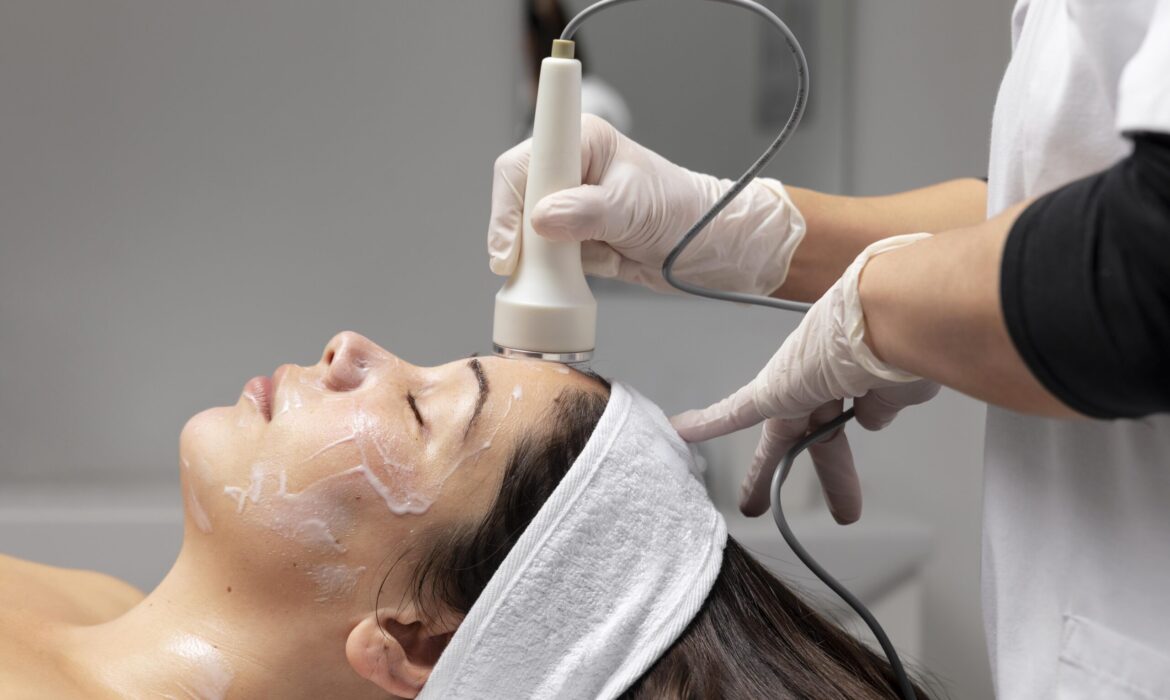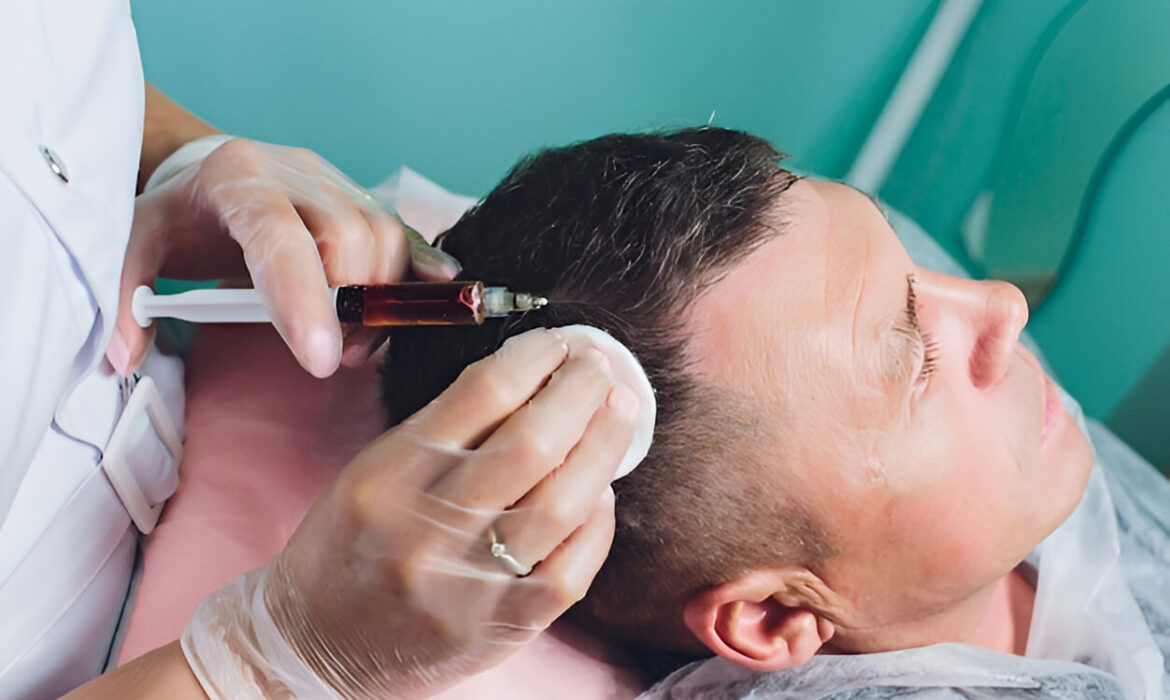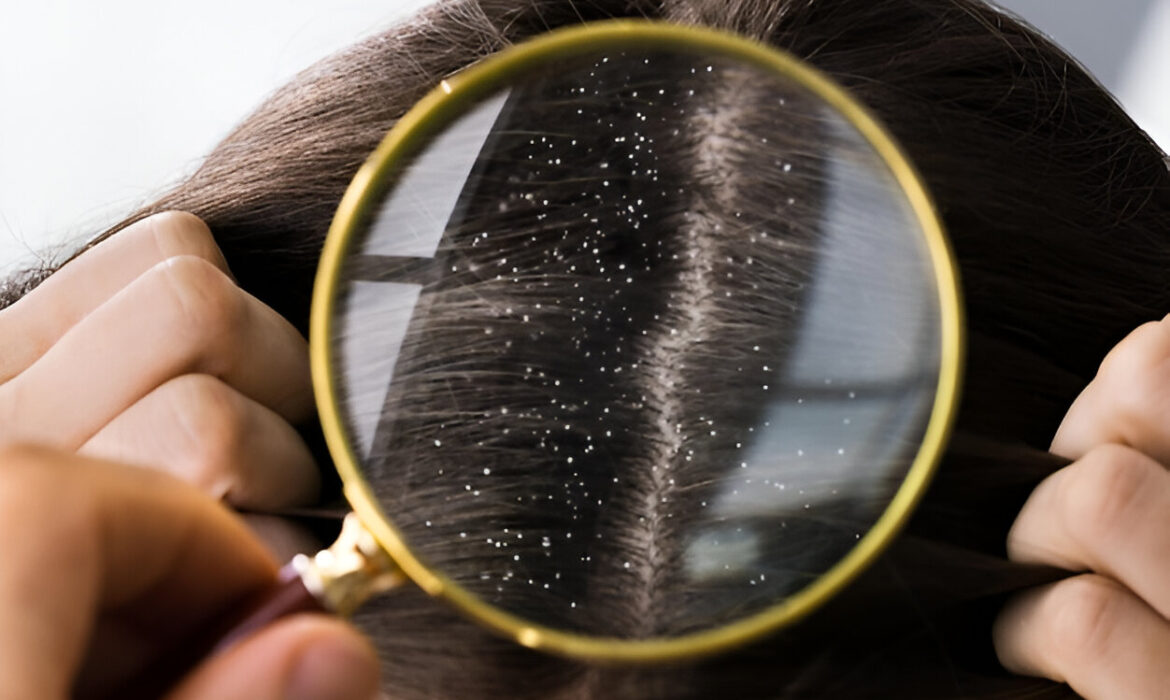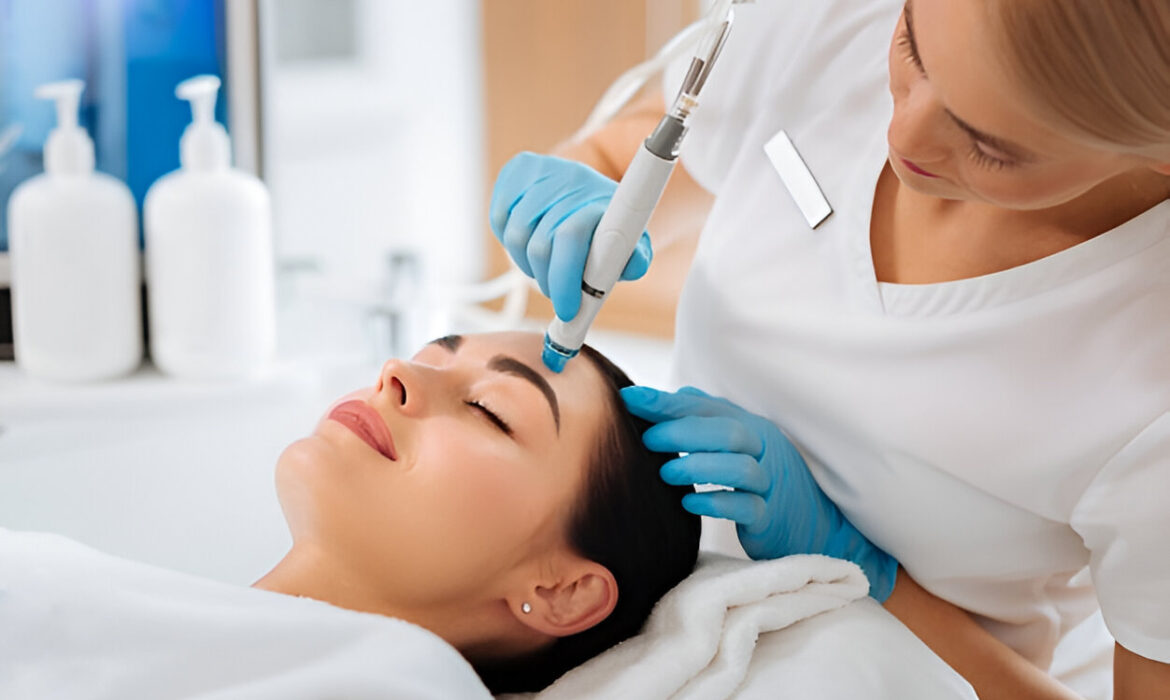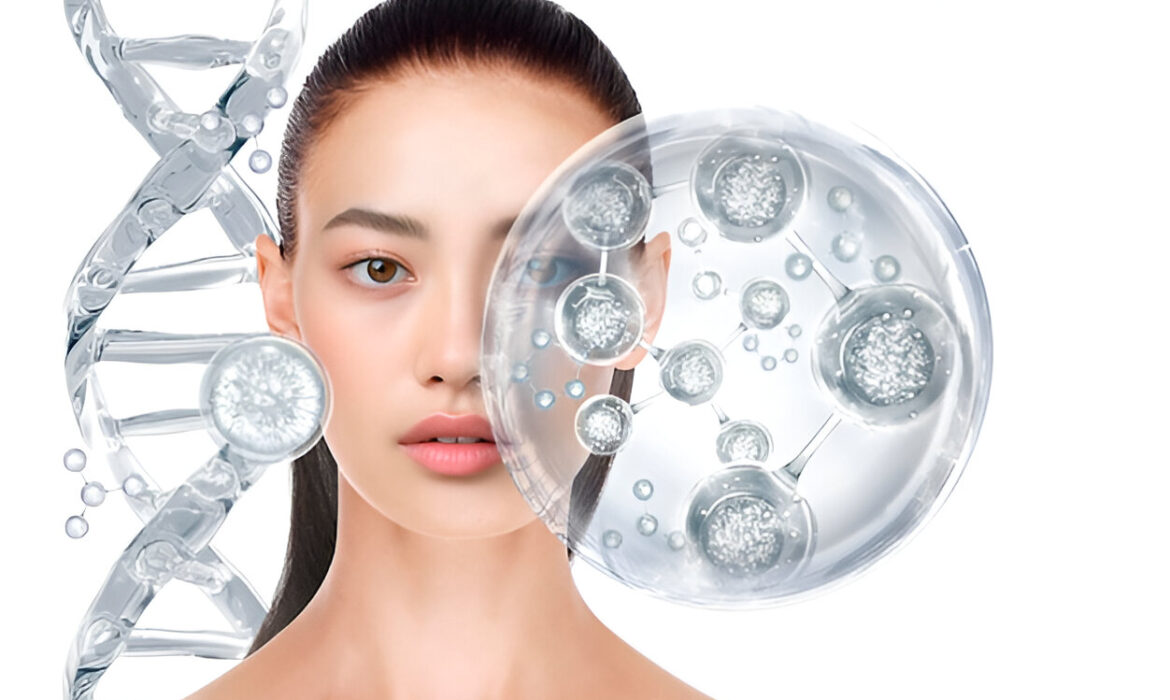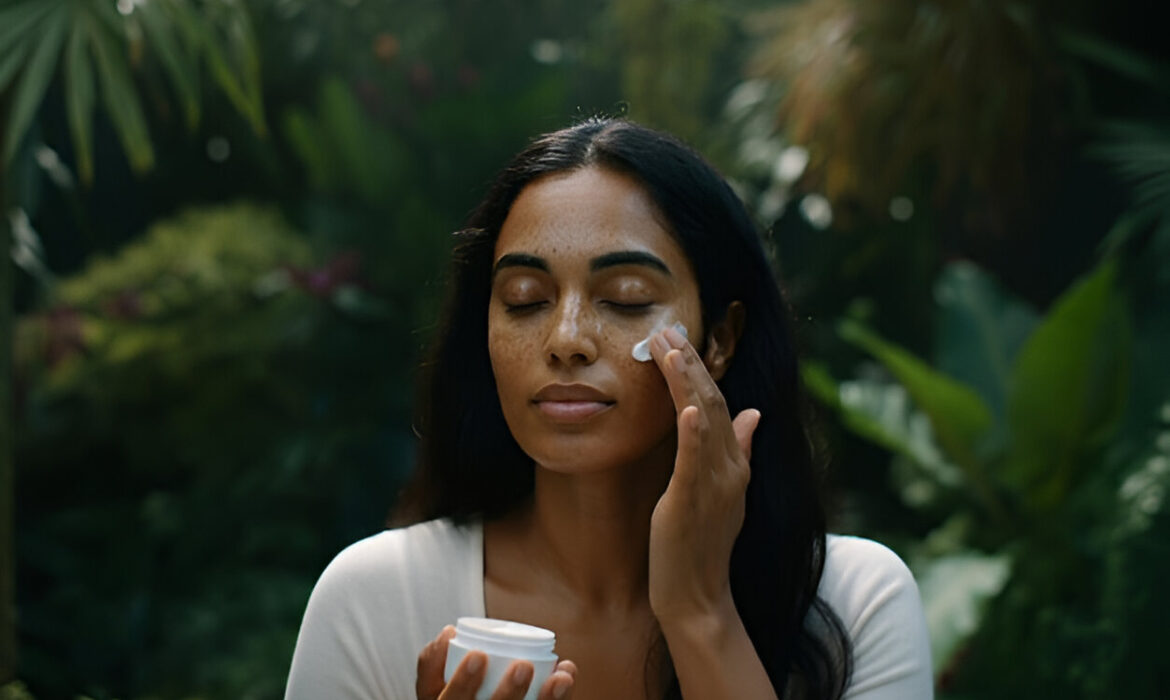Hair Thinning in Teenage: How to Treat It
Hair Thinning in Teenage: How to Treat It
Struggling with hair thinning in teenage years? Get expert tips and treatments from Chennai’s trusted dermatologists at Dr. Hanan Clinic.
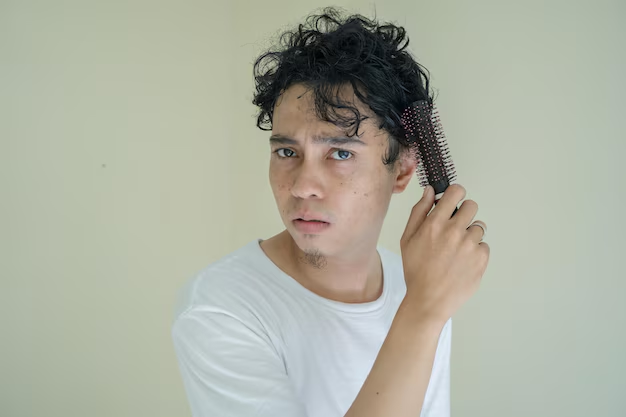
Hair thinning in teenage years is becoming increasingly common, especially due to modern lifestyle habits, nutritional gaps, stress, and hormonal changes. While it’s natural to lose a few strands daily, excessive hair fall or visible thinning at a young age can be distressing. At Dr. Hanan Dermatology Speciality and Trichology Clinic, Chennai, we see many teens facing this issue and provide tailored treatment plans based on in-depth diagnosis.
In this blog, we’ll explore the causes of teenage hair thinning, how to spot early signs, effective treatments, and expert tips to regain hair health safely.
In this blog, we’ll explore the causes of teenage hair thinning
Why Is My Hair Thinning as a Teenager?
Hair thinning during adolescence can be due to several reasons—some reversible, some needing long-term management. The key is early diagnosis.
Common Causes of Hair Thinning in Teenagers:
- Hormonal Changes
Puberty brings a surge in hormones like androgens, which can disrupt the hair growth cycle and cause thinning in both boys and girls. - Nutritional Deficiencies
Low levels of iron, zinc, protein, biotin, or vitamin D can significantly impact hair health. - Stress and Mental Health
Academic pressure, social anxiety, or emotional issues can trigger Telogen Effluvium, a stress-induced form of hair loss. - Poor Diet or Crash Dieting
Skipping meals, extreme calorie deficits, or eating mostly junk food can deprive hair follicles of essential nutrients. - Genetics (Androgenetic Alopecia)
If one or both parents have pattern baldness, it may begin early, especially in males. - Over-Styling and Heat Damage
Constant use of straighteners, curling rods, or tight hairstyles damages hair shafts and roots. - Underlying Medical Conditions
Conditions like PCOS, thyroid imbalance, or autoimmune disorders like alopecia areata may be the root cause.
Related Link: Learn more about Types of Hair Loss and Their Treatments
How to Know If You Have Hair Thinning as a Teen?
Recognizing the early signs of hair thinning is essential for timely treatment.
Early Signs Include:
- A widening parting or receding hairline
- More hair on pillow, comb, or shower drain
- Scalp visibility through the hair
- Hair feeling thinner or lighter than usual
- Reduced ponytail thickness (for girls)
Can Hair Thinning in Teenagers Be Reversed?
Yes—most types of hair thinning in teenagers can be reversed if treated early and correctly. The approach may include medical treatment, lifestyle changes, and professional care under a dermatologist.
Symptoms: Patchy hair loss, broken hairs, and thinning. Most common in adolescents and young adults.
Management: Behavioral therapy, psychological support, and dermatological care.
Best Treatments for Hair Thinning in Teenage
At Dr. Hanan Clinic, we customize hair loss treatment based on the patient’s age, diagnosis, severity, and medical history.
1. Topical Treatments
Mild topical solutions like minoxidil (in low strength) may be used under medical supervision to stimulate hair follicles and improve density.
2. Nutritional Therapy
We prescribe supplements containing biotin, iron, zinc, and amino acids to restore internal imbalances. Diet counseling is often part of the treatment.
3. PRP Therapy for Teens
Platelet-Rich Plasma (PRP) therapy is a safe, non-surgical treatment that uses your own blood’s growth factors to stimulate hair regrowth. It’s becoming a popular option even for young patients with early signs of androgenetic alopecia.
4. Low-Level Laser Therapy (LLLT)
This painless treatment boosts blood circulation in the scalp and revitalizes weak hair follicles.
5. Microneedling
For early-stage thinning, microneedling combined with hair serums can help increase scalp absorption and rejuvenate follicles.
What Not to Do If You're a Teen Experiencing Hair Loss
- Don’t self-medicate with strong OTC hair loss products
- Avoid using adult-strength minoxidil or oral finasteride without a prescription
- Don’t follow viral trends (on TikTok, YouTube, etc.) without expert advice
- Avoid stress-induced pulling or tugging of hair (Trichotillomania)
Expert Tips to Prevent Hair Thinning in Teenagers
- Eat a balanced diet with protein, leafy greens, and healthy fats
- Wash your scalp 2–3 times a week with a gentle, sulfate-free shampoo
- Avoid tight hairstyles like ponytails or buns
- Stay hydrated and get 7–8 hours of sleep
- Incorporate relaxation methods like yoga or journaling to manage stress
When to See a Dermatologist for Hair Thinning
Visit a specialist if:
- Hair thinning has continued for more than 2–3 months
- You have a family history of baldness
- You notice bald patches or scalp inflammation
- You are experiencing emotional distress due to hair changes
At Dr. Hanan Dermatology Speciality and Trichology Clinic, our dermatologists use trichoscopy, blood tests, and clinical evaluation to diagnose the exact reason for your hair thinning. This enables us to design a personalized, teen-friendly treatment plan.
Explore Treatments: Hair Regrowth Treatments in Chennai
Final Thoughts: Hair Thinning in Teenage Is Treatable
While hair thinning in teenage years can feel overwhelming, the good news is that it’s usually reversible with timely care. Whether the root cause is stress, poor nutrition, or hormonal changes, you don’t have to face it alone.
Our team at Dr. Hanan Clinic in Chennai has helped hundreds of teens regain confidence and fuller, healthier hair. Early consultation and a customized plan are the keys to long-term hair wellness.
Book Your Consultation Today!
Table of Contents
Can Stress Cause Hair Loss? Dermatologists Tips
Can Stress Cause Hair Loss? Dermatologists Tips
Can stress cause hair loss? Learn what top dermatologists in Chennai say about the link between stress and hair fall, types, treatments, and recovery tips.

Why Seasonal Skin Care Matters in Chennai
Hair loss is a concern that affects millions globally, and one common but often overlooked cause is stress. In a city like Chennai, where fast-paced lifestyles, work pressure, and environmental changes are constant, stress-related hair fall is becoming increasingly common. At Dr. Hanan Dermatology Speciality and Trichology Clinic, our dermatologists frequently treat patients whose hair loss is directly or indirectly triggered by stress.
In this blog, we’ll explore the scientific link between stress and hair loss, the different types of hair fall caused by stress, symptoms to watch out for, and expert treatment options available in Chennai.
How Does Stress Cause Hair Loss?
Stress affects the body in multiple ways—and your scalp and hair follicles aren’t spared. When the body undergoes emotional or physical stress, it can disrupt the normal hair growth cycle. This disruption leads to excessive shedding, thinning, or even hair loss in patches.
Chronic stress can trigger hormonal imbalances, reduce blood flow to the scalp, and elevate levels of cortisol (the stress hormone), all of which negatively affect hair health. Inflammation caused by stress can also damage the hair follicles and slow down hair production.
Studies have shown that stress can impact the anagen (growth) phase of the hair cycle, causing more hairs to shift into the telogen (resting) phase prematurely. This leads to a noticeable increase in hair fall within a few months of the stressful event.
Types of Stress-Related Hair Loss
There are three main types of hair loss that are scientifically linked to stress:
Telogen Effluvium
This is the most common form of stress-induced hair loss. During Telogen Effluvium, a large number of hair follicles prematurely enter the resting phase (telogen), causing increased shedding.
Symptoms: Noticeable hair fall while combing, washing, or on your pillow.
Triggers: Sudden illness, high fever, emotional trauma, childbirth, or crash diets.
Recovery: Usually resolves in 3–6 months once the stressor is removed.
Alopecia Areata
This is an autoimmune condition where the immune system attacks hair follicles, often triggered by extreme stress.
Symptoms: Sudden hair loss in round patches, usually on the scalp. In some cases, it may affect eyebrows or beard.
Triggers: Emotional stress, family history, autoimmune disorders.
Treatment: Corticosteroids, immunotherapy, and stress management.
Trichotillomania
This is a psychological condition where a person feels the urge to pull out their hair due to anxiety or emotional distress.
Symptoms: Patchy hair loss, broken hairs, and thinning. Most common in adolescents and young adults.
Management: Behavioral therapy, psychological support, and dermatological care.
Expert-Backed Treatments in Chennai
At Dr. Hanan Dermatology Speciality and Trichology Clinic, we offer specialized diagnostics and treatment plans for stress-induced hair loss:
- PRP (Platelet-Rich Plasma) Therapy: Promotes growth by stimulating hair follicles and increasing scalp health.
- Minoxidil and Topical Serums: Helps prolong the growth phase of hair and reduce shedding.
- Hair Regrowth Supplements: Targets internal deficiencies caused by stress, including biotin, zinc, and vitamin D.
- Laser Therapy for Scalp: Improves blood circulation and strengthens follicles.
- Counseling and Stress Management Referrals: For cases linked with anxiety or depression, we refer you to our in-house mental health experts.
We believe in combining internal wellness with external treatment for holistic hair recovery.
How to Prevent Stress-Related Hair Loss
Practice Regular Relaxation Techniques: Yoga, meditation, and breathing exercises have been shown to lower cortisol levels.
Sleep Well: Aim for 7–8 hours of sleep every night to help the body repair and regenerate.
Maintain a Balanced Diet: Include foods rich in iron, protein, omega-3 fatty acids, and antioxidants.
Avoid Over-Styling and Harsh Products: Reduce the use of flat irons, harsh dyes, and chemical treatments.
Stay Hydrated: Water supports scalp health and nutrient delivery to follicles.
When to See a Dermatologist
If you’re experiencing sudden, excessive hair loss or patchy bald spots, don’t wait. The earlier the diagnosis, the more effective the treatment. At Dr. Hanan Clinic, we perform detailed scalp analysis, trichoscopy, and blood tests to identify the root cause.
Our dermatologists then customize a treatment plan to not only stop the hair loss but also encourage healthy regrowth.
When to See a Dermatologist
Stress-related hair loss is more common than most people realize, especially in a high-stress environment like Chennai. The good news? With expert guidance and timely treatment, most people can fully recover and enjoy healthy hair once again.
If you’re concerned about hair thinning or sudden shedding, visit Dr. Hanan Dermatology Speciality and Trichology Clinic. We’ll help you identify the cause, relieve your stress, and restore your confidence—one strand at a time.
Frequently asked Questions
Yes. In most cases, once the stressor is removed and the body returns to a balanced state, hair often begins to regrow. Treatments like PRP and topical solutions can accelerate this recovery. Learn more about PRP Treatment for Hair Loss in Chennai.
Depending on the type and severity, stress-related hair loss may last from 3–6 months. Recovery depends on early intervention and proper treatment. Find solutions through our Hair Regrowth Treatments in Chennai.
Sudden, diffuse hair shedding after a stressful event (like illness, surgery, or emotional trauma) is a strong indicator. A dermatologist can confirm this through scalp examination and history. Consider reading Hair Fall While Combing: Best Ways to Minimize It.
In most cases, stress-related hair loss is temporary. However, chronic stress or delayed treatment can worsen underlying conditions and prolong recovery. For further understanding, see Hair Transplant Pain: What Should You Expect?.
Book Your Consultation Today!
Table of Contents
Seasonal Skin Care in Chennai: Dermatologist Tips for Every Climate
Seasonal Skin Care in Chennai: Dermatologist Tips for Every Climate
Learn how to adjust your skincare routine in Chennai’s changing weather—from monsoons to peak summers. Expert-backed tips from Dr. Hanan Dermatology Speciality and Trichology Clinic.
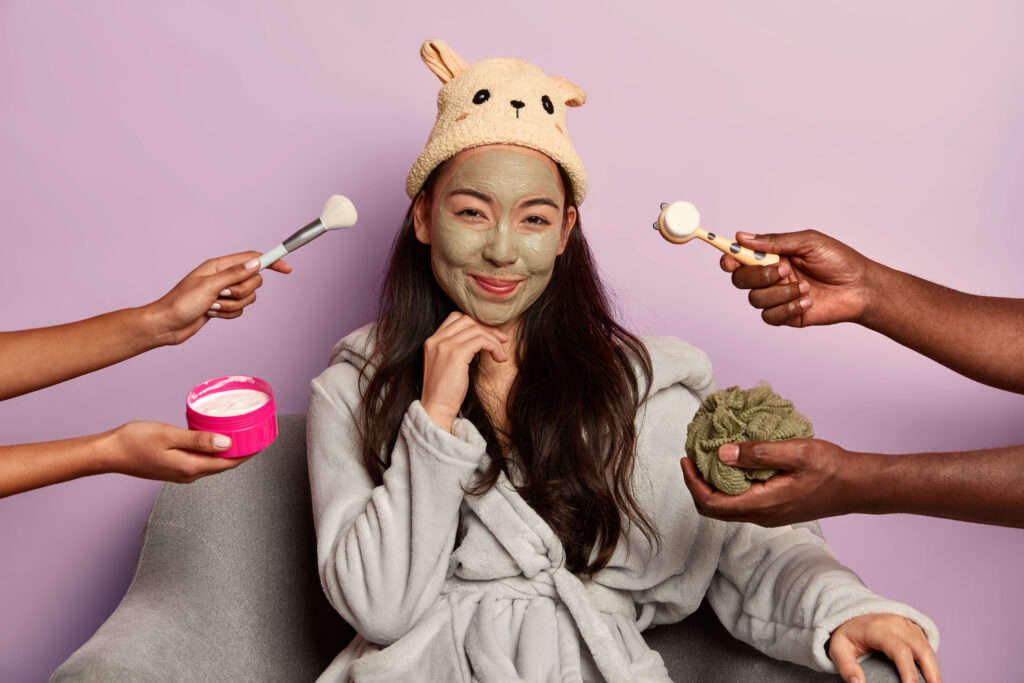
Why Seasonal Skin Care Matters in Chennai
Chennai’s climate swings between hot, humid summers, unpredictable monsoons, and mild winters. These seasonal changes directly affect your skin’s hydration, oil balance, and sensitivity levels.
At Dr. Hanan Dermatology Speciality and Trichology Clinic, we help patients adapt their skincare to Chennai’s tropical conditions to prevent issues like acne, dryness, sunburn, and fungal infections.
Summer Skin Care Tips
Chennai summers can cause excessive sweating, clogged pores, and sun damage. Here’s how to adjust:
- Use a lightweight, gel-based moisturizer to stay hydrated without greasiness.
- Apply broad-spectrum sunscreen (SPF 50+) every 3–4 hours.
- Avoid harsh scrubs that strip the skin barrier.
- Keep blotting papers handy to manage excess oil.
Monsoon Skin Care Tips
The humid monsoon season increases the risk of fungal infections, acne breakouts, and oily skin:
- Switch to a foam-based cleanser to manage sweat and pollution buildup.
- Exfoliate once a week with a mild AHA-based exfoliant.
- Wear breathable makeup or go makeup-free.
- Avoid damp clothes and scalp exposure—especially if prone to dandruff.
Winter Skin Care Tips
Though Chennai’s winters are mild, dry patches and skin tightness are still common:
- Use a hydrating cream or ceramide-rich moisturizer.
- Reduce the frequency of exfoliation.
- Incorporate hyaluronic acid serums for deep hydration.
- Don’t skip sunscreen—it’s still necessary in winter UV.
How to Transition Between Seasons Smoothly
Changing your routine abruptly can irritate your skin. Here’s how to transition:
- Observe your skin: Is it becoming oilier, drier, or more sensitive?
- Introduce new products one at a time.
- Avoid layering too many actives when the weather shifts.
- Book a quarterly consultation for professional evaluation.
Dermatologist’s Take
At Dr. Hanan Clinic, our experts recommend seasonal skin assessments to fine-tune your skin routine. We offer custom facial therapies, anti-fungal treatments, and hydration boosters tailored for Chennai’s climate.
Explore treatments like:
- Hydrafacial in Chennai
- Chemical Peels
- Fungal Infection Treatment
Conclusion
Adapting your skincare routine with the seasons is essential—not optional—especially in a city like Chennai. Stay ahead of the weather curve with personalized advice from our dermatologists at Dr. Hanan Dermatology Speciality and Trichology Clinic.
Book Your Consultation Today!
Table of Contents
Hydrafacial vs. Regular Facial: Which is Better for Your Skin?
Hydrafacial vs. Regular Facial: Which is Better for Your Skin?
Confused between Hydrafacial and salon facials? Discover how Hydrafacial offers deeper cleansing, hydration, and glow—with expert care from Dr. Hanan Clinic in Chennai.
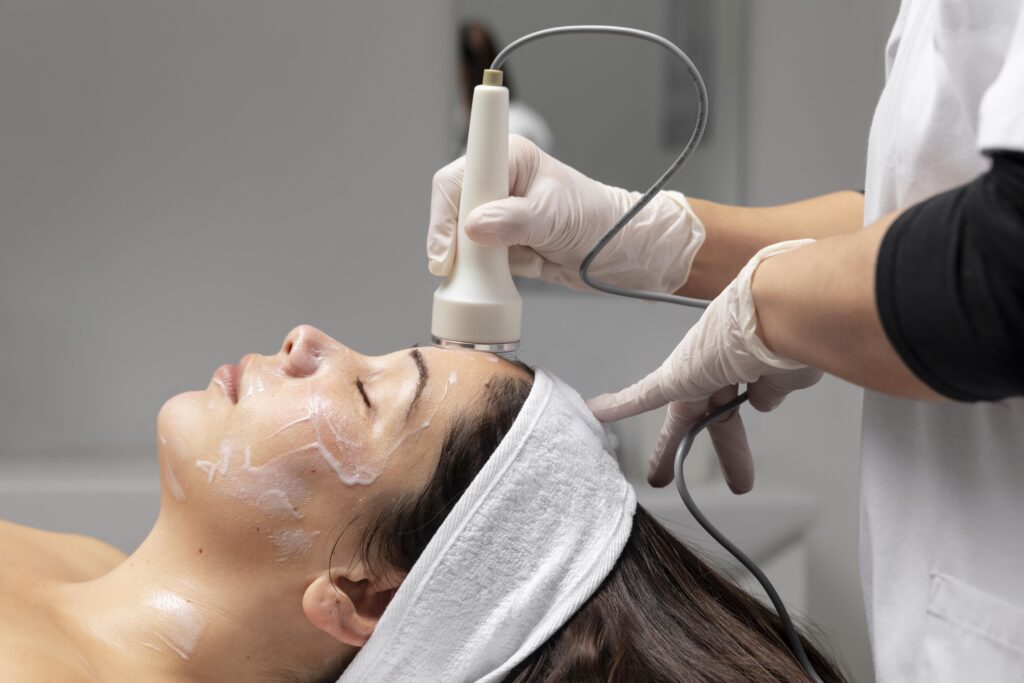
When it comes to skincare, facials are a go-to choice for cleansing, hydration, and instant glow. But not all facials are created equal. While regular salon facials offer temporary benefits, Hydrafacial treatments—now available at Dr. Hanan Dermatology Speciality and Trichology Clinic in Chennai—are designed for long-term skin health, powered by medical-grade technology.
If you’re wondering which one is better for your skin type and concern, this blog breaks down the key differences, benefits, and outcomes of Hydrafacial vs. Regular facial, so you can make an informed choice.
What Is a Regular Facial?
A regular facial usually involves manual cleansing, steaming, exfoliation, mask application, and moisturization. It’s performed by a beautician or skincare therapist and typically follows a generic routine.
Common Benefits:
- Removes surface dirt and oil
- Provides temporary glow
- Relaxes the facial muscles
- Hydrates and refreshes the skin
Limitations:
- Limited penetration of products
- May not suit sensitive or acne-prone skin
- Uses comedogenic creams or perfumes in some cases
- Results last only a few days
What Is a Hydrafacial?
Hydrafacial is a dermatologist-supervised, non-invasive treatment that combines cleansing, exfoliation, extraction, hydration, and antioxidant infusion in a single session. It uses patented vortex-fusion technology for deep skin purification without irritation.
At Dr. Hanan Clinic, we use FDA-approved Hydrafacial machines and tailor the solution serums to your skin type and concern.
Key Benefits:
- Deep pore cleansing without harsh extractions
- Gentle exfoliation with no redness
- Infusion of hydrating serums like hyaluronic acid
- Boosts collagen production
- Safe for all skin types—including sensitive and acne-prone skin
How Long Do the Results Last?
Regular Facial:
Lasts about 3–5 days before the effects fade. It doesn’t impact underlying skin health.
Hydrafacial:
Provides visible improvement for 5–10 days or more, and improves long-term skin texture, tone, and clarity with repeated sessions.
Which Facial Is Better for Acne-Prone Skin?
Hydrafacial is the clear winner. It clears clogged pores, controls oil production, and hydrates the skin—all without harsh manual extraction. The treatment is designed to calm inflammation, making it ideal for:
- Acne-prone skin
- Oily T-zones
- Cystic breakouts
Regular facials, on the other hand, may irritate active acne and use comedogenic products that worsen breakouts.
Which Is Better for Dry and Dull Skin?
Hydrafacial delivers instant hydration using active ingredients like hyaluronic acid, peptides, and antioxidants. It also improves skin tone and texture over time.
If your concern is dullness, dryness, or uneven skin, Hydrafacial is a superior solution over traditional facials, which only offer surface-level moisturization.
Book Your Consultation Today!
Table of Contents
Hair Transplant Aftercare Tips: Ensuring Long-Term Results
Hair Transplant Aftercare Tips: Ensuring Long-Term Results
Hair transplant aftercare tips from Dr. Hanan Clinic, Chennai to protect grafts, reduce risks, and boost long-term hair growth.
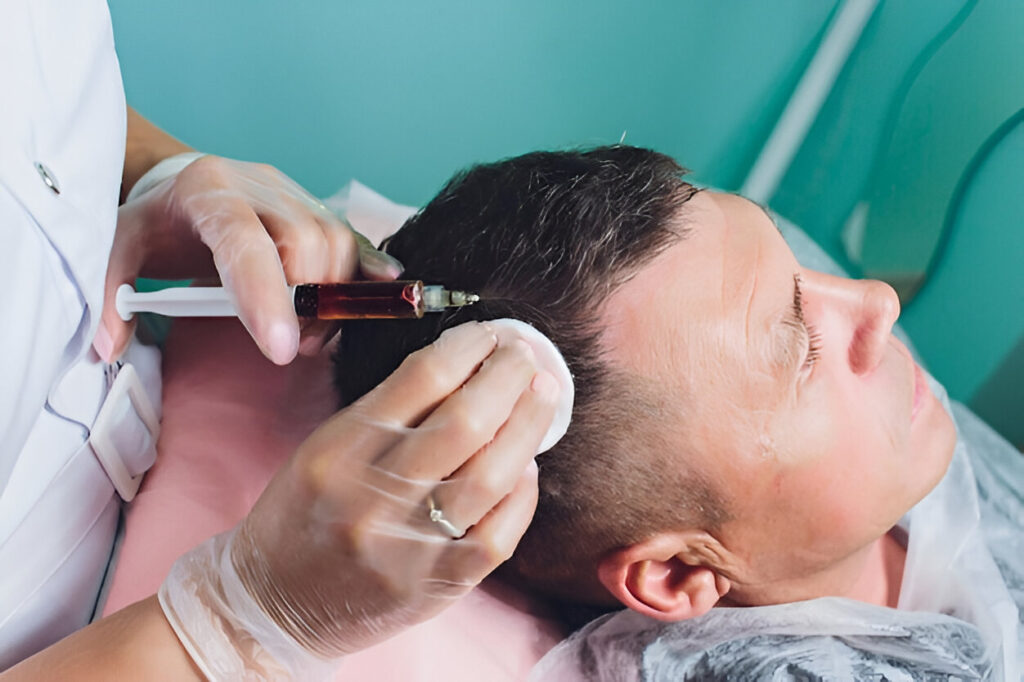
Hair transplant surgery is a transformative step towards restoring natural hair growth and confidence. But the real success of your transplant doesn’t just depend on the procedure itself – it also depends heavily on how you care for your scalp afterward. At Dr. Hanan Dermatology Speciality and Trichology Clinic in Chennai, we ensure that every patient receives personalized aftercare guidance to promote healing and maximize long-term results.
This blog outlines medically approved, dermatologist-backed aftercare tips for anyone undergoing a hair transplant, with answers to frequently asked questions and practical advice to speed up your recovery. Learn more about our Best Hair Transplant Clinic in Chennai for trusted care.
Why Aftercare Matters in Hair Transplant Recovery
The newly transplanted hair follicles are delicate and require a healing period to anchor themselves into the scalp. Poor aftercare can lead to:
- Graft dislodgment
- Infection or inflammation
- Delayed healing
- Poor hair growth or transplant failure
Proper aftercare improves the success rate, minimizes discomfort, and promotes healthy, long-lasting hair growth.
What Is the Best Treatment for Dandruff According to Dermatologists?
At Dr. Hanan Clinic, we believe in customized, evidence-based treatment plans. Depending on your scalp type, the severity of your dandruff, and any underlying skin condition, our dermatologists may recommend:
The initial 48 hours post-transplant are critical. Here’s what to follow:
- Avoid touching or scratching the scalp.
- Sleep with your head elevated (30-45 degrees) to reduce swelling.
- Use prescribed antibiotic lotion or spray as directed.
- Do not wash your hair unless advised by your dermatologist.
- Avoid direct sunlight, dust, or pollution.
Immediate Aftercare: First 48 Hours
The initial 48 hours post-transplant are critical. Here’s what to follow:
- Avoid touching or scratching the scalp.
- Sleep with your head elevated (30-45 degrees) to reduce swelling.
- Use prescribed antibiotic lotion or spray as directed.
- Do not wash your hair unless advised by your dermatologist.
- Avoid direct sunlight, dust, or pollution.
Tip:
We recommend using a satin or soft pillow cover and avoiding harsh or textured fabrics.
For more insights, read our blog on Hair Transplant Pain: What Should You Expect?
Do's:
- Wash your hair gently with a mild, dermatologist-recommended shampoo after 3–4 days (if advised).
- Pat dry with a soft towel – no rubbing or massaging.
- Continue any oral antibiotics or anti-inflammatory medicines.
Don’ts:
- Avoid hats, helmets, or anything that touches the graft area.
- Do not consume alcohol or smoke.
- Avoid sweating excessively from workouts or outdoor heat.
After Two Weeks: Shedding Phase & Care
At this stage, transplanted hairs may fall out – this is normal. It’s called “shock loss” and is part of the cycle.
- Continue regular gentle cleansing of the scalp.
- Apply any prescribed minoxidil or topical serums. Refer to our Hair Regrowth Treatments in Chennai blog for more info.
- Stay away from chemical products, coloring, or heat tools.
- Attend your first follow-up consultation at Dr. Hanan Clinic.
Long-Term Hair Transplant Care (1-6 Months)
As new hairs begin to grow, it’s important to:
- Maintain scalp hygiene to prevent folliculitis (inflammation).
- Take nutritional supplements if recommended (like biotin, zinc, omega-3s).
- Avoid harsh weather and UV exposure – use caps or SPF sprays.
- Schedule check-ins every 2-3 months to monitor growth.
Consider supporting treatments like PRP Treatment for Hair Loss in Chennai to enhance results.
What Are the Signs of Improper Healing?
You should immediately report any of the following to your dermatologist:
- Excessive pain or pus
- Bleeding beyond 48 hours
- Intense redness or swelling
- Fever or foul smell from the scalp
Early intervention can prevent complications and preserve the integrity of the grafts.
How long does it take to recover from a hair transplant?
Recovery time after a hair transplant varies by individual, but most people are able to return to regular daily activities within 7–10 days. The initial healing of the donor and recipient sites typically takes about a week, while redness and scabbing may last slightly longer.
New hair growth becomes noticeable around 3 months, but the full transformation takes up to 12 months. Patience and consistent aftercare are crucial during this phase.
When can I sleep normally after a hair transplant?
Sleeping posture is critical in the first week post-procedure. You’ll be advised to sleep with your head elevated at a 30-45 degree angle for the first 5–7 nights. This helps minimize swelling and prevents accidental friction or damage to the grafts.
Once the swelling subsides and the scabs begin to fall off (usually after day 7), you can gradually return to your normal sleeping position—though it’s still best to avoid rubbing your scalp directly on pillows for the first two weeks.
Can I apply oil or serum after a hair transplant?
In general, oils should be avoided for at least the first 2–3 weeks after a hair transplant. Applying oil too soon can clog the healing follicles or increase the risk of infection. However, dermatologist-approved serums—especially those containing minoxidil or growth peptides—may be introduced after 3 weeks or based on your doctor’s advice.
Learn more about supportive topical tools in our article on Dermaroller for Hair Growth – Is It Effective?
When will transplanted hair start growing?
Post-transplant, you’ll notice that the newly implanted hairs begin to shed within the first 2–4 weeks. This is completely normal and part of the hair’s growth cycle. After this “shock loss,” hair follicles enter a dormant phase before reactivating.
New hair typically begins growing around the 3-month mark, and significant improvements are visible by the 6th month. Full maturity—density, texture, and length—usually appears between 9 to 12 months, depending on individual growth rate and scalp health.
Explore more helpful questions in Top Questions to Ask Before Getting a Hair Transplant
Final Thoughts: Trust Expert Guidance for Lasting Results
Your hair transplant journey doesn’t end in the operating chair. With careful, evidence-based aftercare, you can ensure the grafts take root and grow into natural, healthy hair. At Dr. Hanan Dermatology Speciality and Trichology Clinic, Chennai, our dermatologists offer continuous support, follow-ups, and individualized aftercare plans to help you maintain results for a lifetime.
Book Your Consultation Today!
Table of Contents
Best Treatments for Dandruff and Itchy Scalp
Best Treatments for Dandruff and Itchy Scalp
Find the best treatments for dandruff and itchy scalp from Chennai’s expert dermatologists at Dr. Hanan Clinic.
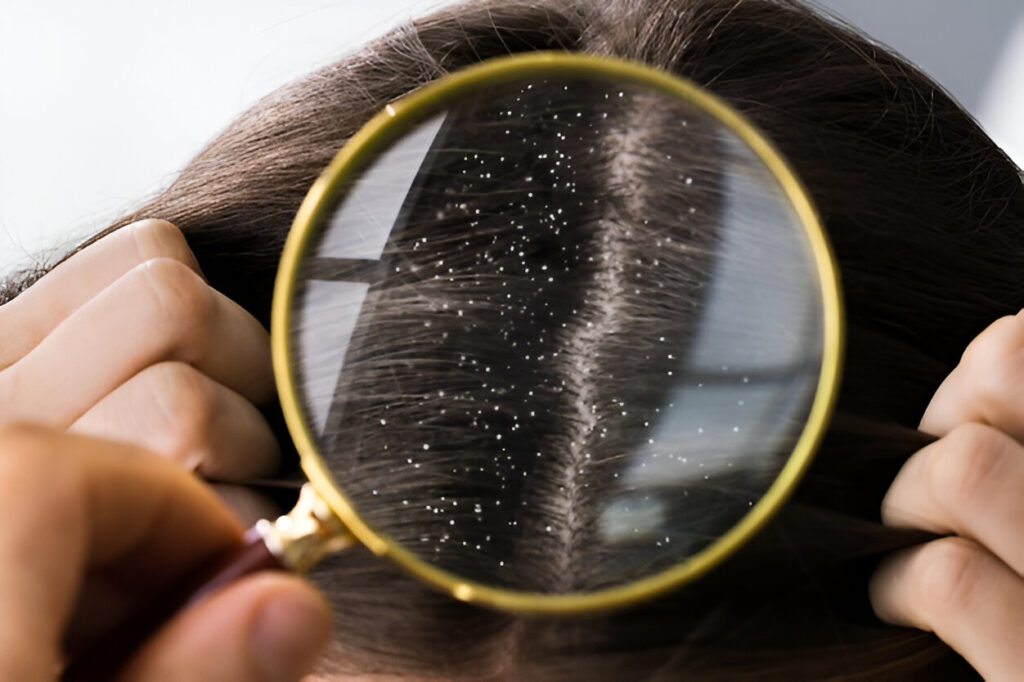
Dandruff and itchy scalp are two of the most common hair and scalp issues, affecting millions of people across all age groups. While they might seem like minor inconveniences, these conditions can lead to embarrassment, discomfort, and even hair loss if left untreated. At Dr. Hanan Dermatology Speciality and Trichology Clinic in Chennai, our dermatologists provide medically approved solutions that address the root cause of scalp problems—not just the symptoms.
This blog explains the best treatments for dandruff and itchy scalp, using a clinical, EEAT-backed approach to ensure you receive trustworthy, expert-backed advice for your hair and scalp health.
What Causes Dandruff and Itchy Scalp?
Dandruff is typically caused by one or a combination of the following:
- Seborrheic dermatitis (an inflammatory skin condition)
- Malassezia (a yeast-like fungus naturally found on the scalp)
- Dry skin or product buildup
- Excess oil production
- Improper scalp hygiene
- Sensitivity to hair care products (contact dermatitis)
An itchy scalp may also be triggered by the same factors or other conditions like psoriasis, eczema, or even lice. Identifying the cause is key to finding the right treatment.
What Is the Best Treatment for Dandruff According to Dermatologists?
At Dr. Hanan Clinic, we believe in customized, evidence-based treatment plans. Depending on your scalp type, the severity of your dandruff, and any underlying skin condition, our dermatologists may recommend:
1. Medicated Shampoos
Prescribed shampoos that contain:
- Ketoconazole (antifungal)
- Zinc pyrithione (antimicrobial + anti-inflammatory)
- Salicylic acid (exfoliates flakes and reduces buildup)
- Coal tar (slows skin cell turnover)
These are often used 2–3 times a week, followed by a mild, hydrating conditioner.
2. Topical Steroids or Antifungals
In cases of moderate to severe seborrheic dermatitis or psoriasis, dermatologists may prescribe:
- Corticosteroid lotions or creams
- Antifungal lotions or foams
These help reduce inflammation and yeast overgrowth on the scalp.
3. Scalp Exfoliation Treatments
Professional scalp exfoliation at our clinic can help remove:
- Dead skin buildup
- Excess oil
- Product residue
This prepares the scalp to absorb treatment products more effectively and restores scalp balance.
4. Low-Level Light Therapy (LLLT)
For chronic inflammation or itchiness, LLLT can help by:
- Improving microcirculation
- Reducing oxidative stress
- Boosting scalp health
This is often used alongside medicated shampoos for long-term results.
5. Hair & Scalp Analysis
We use digital trichoscopy to:
- Identify exact causes of dandruff
- Detect fungal growth or skin damage
- Customize your treatment protocol
How Do You Permanently Get Rid of Dandruff?
There is no “permanent” cure for dandruff, but it can be effectively managed with the right combination of:
- Medical treatment
- Consistent scalp hygiene
- Avoidance of harsh hair products
- Balanced diet (rich in zinc, omega-3s, and vitamin B)
- Regular follow-ups with a dermatologist
Dandruff often recurs when treatment is stopped prematurely or when lifestyle factors are ignored.
Can Dandruff Cause Hair Loss?
Yes, indirectly. Severe dandruff and constant scratching may lead to:
- Hair root inflammation
- Hair breakage
- Follicular damage due to fungal infections
While dandruff doesn’t cause baldness, chronic scalp inflammation can contribute to diffuse hair shedding or thinning, especially in individuals already prone to hair fall.
Are There Natural Remedies for Dandruff That Actually Work?
Some natural remedies offer mild relief, such as:
- Tea tree oil (antifungal)
- Apple cider vinegar rinses (restores pH)
- Aloe vera gel (soothing and anti-inflammatory)
However, these are best used as supportive care and should not replace dermatologist-prescribed treatments for persistent cases.
How Can I Prevent Dandruff and Itchy Scalp in the Future?
- Wash hair regularly with a gentle shampoo
- Avoid excessive oiling and product buildup
- Use non-comedogenic scalp care products
- Stay hydrated and eat a nutrient-rich diet
- Protect scalp from sun exposure
- Avoid harsh heat styling or chemical treatments
Routine scalp checkups at our clinic can help monitor your progress and avoid recurrence.
Why Choose Dr. Hanan Clinic for Scalp and Hair Treatments?
- Board-certified dermatologists with trichology expertise
- Advanced diagnostic tools like digital scalp analysis
- Personalized dandruff and scalp care plans
- Safe, medical-grade treatments and equipment
- Trusted care by one of Chennai’s leading dermatology clinics
Book a Consultation for Dandruff Treatment in Chennai
If you’re struggling with persistent dandruff or scalp irritation, don’t rely on over-the-counter fixes. Consult with our dermatology team at Dr. Hanan Dermatology Speciality and Trichology Clinic for safe and lasting relief.
Healthy scalp. Healthier hair. It starts with expert care.
Book Your Consultation Today!
Table of Contents
Top Skin Brightening Treatments in Chennai
Top Skin Brightening Treatments in Chennai: What We Offer at Dr. Hanan Clinic
From glowing skin to liver detox, explore the real benefits of glutathione-clinically backed treatments now available at Dr. Hanan Clinic, Chennai.
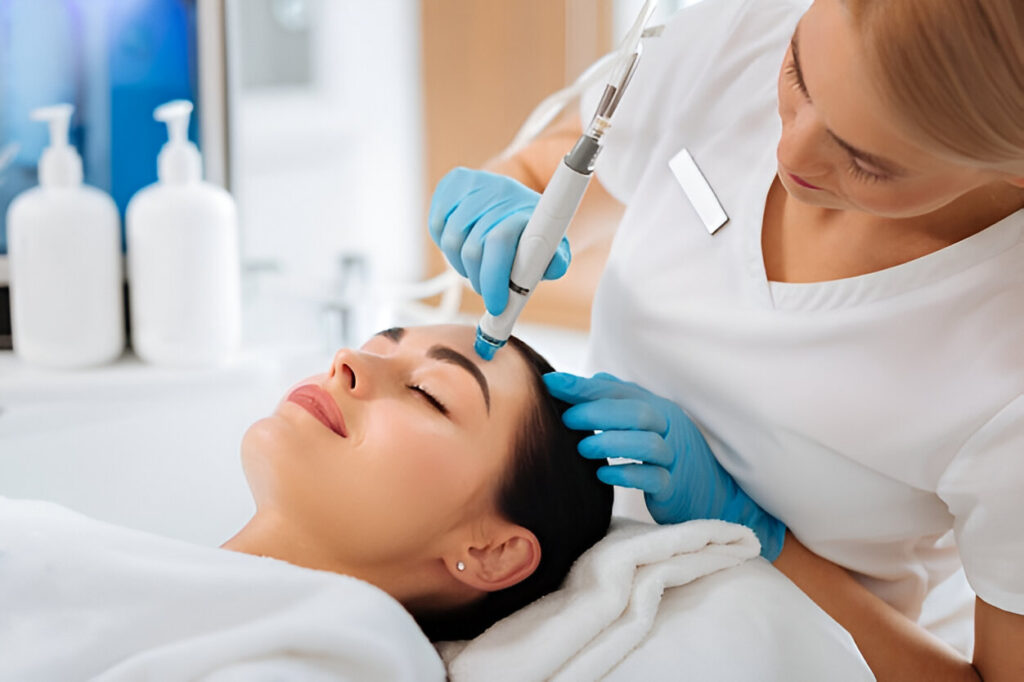
Clear, glowing, and even-toned skin is a common goal for many individuals. With Chennai’s harsh sun, rising pollution, and lifestyle stressors, skin dullness, pigmentation, and uneven skin tone are increasingly common. At Dr. Hanan Dermatology Speciality and Trichology Clinic, we specialize in advanced skin brightening solutions tailored to your skin’s unique needs.
This blog explores the top skin brightening treatments available in Chennai—all backed by medical expertise, proven technology, and patient success stories from our clinic.
Why Skin Brightening Matters
Skin brightening is not about changing your natural skin tone. It’s about restoring clarity, evenness, and radiance by addressing concerns like:
HyperpigmentationExplore the top skin brightening treatments in Chennai-from glutathione to laser-performed by dermatologists at Dr. Hanan Clinic for radiant, even-toned skin.
- Melasma
- Sun damage
- Acne scars
- Dull or uneven complexion
Our treatment plans are customized after a thorough skin analysis to safely and effectively improve skin tone and texture.
Glutathione Therapy
Glutathione is a powerful antioxidant known for its skin-brightening effects. At Dr. Hanan Clinic, we offer both IV glutathione therapy and oral protocols to:
- Reduce melanin production
- Detoxify the skin and body
- Improve skin clarity and luminosity
It’s often combined with vitamin C for enhanced absorption and long-term skin health benefits. Most patients begin seeing visible results in 4–6 weeks with consistent sessions.
Chemical Peels
Chemical peels help remove dead skin cells, stimulate cell turnover, and fade pigmentation. We use a variety of medical-grade peels like:
- Glycolic acid
- Lactic acid
- TCA (trichloroacetic acid)
- Mandelic acid
These treatments target: - Sun tan and sun spots
- Post-acne marks
- Uneven tone and texture
Our dermatologists determine the right peel based on your skin type and concern. A series of sessions often delivers long-lasting brightness and smoother skin.
Laser Skin Resurfacing
Using technologies like Fractional CO2 and Q-switched Nd:YAG lasers, laser skin resurfacing improves skin tone, reduces pigmentation, and stimulates collagen production.
It is ideal for:
- Deep pigmentation
- Age spots
- Resistant melasma
- Dull and rough skin
Laser therapy offers dramatic results with minimal downtime and is especially effective when combined with other topical or oral treatments.
Microneedling with Exosomes or PRP
Microneedling creates microchannels in the skin, enhancing collagen production and the delivery of brightening agents like PRP (Platelet-Rich Plasma) or Exosomes.
This treatment:
- Fades pigmentation
- Brightens dull skin
- Improves skin firmness and texture
It is best suited for people with uneven tone, mild acne scars, or early signs of aging.
At Dr. Hanan Dermatology Speciality and Trichology Clinic in Chennai, we tailor every skin-brightening plan based on individual goals, lifestyle, and clinical history. If you’re curious whether glutathione is right for you, our dermatologists are here to help.
Medical Facials & Medi-Fusion Treatments
Unlike basic salon facials, our dermatologist-supervised medical facials are designed to:
- Deep cleanse and exfoliate
- Hydrate the skin
- Infuse brightening serums like niacinamide and vitamin C
Options like Hydrafacial and Medi-Fusion Glow Therapy are ideal for regular skin maintenance and achieving instant brightness before a big event.
What Makes Our Clinic Different?
At Dr. Hanan Dermatology Speciality and Trichology Clinic, every treatment is:
Backed by dermatological expertise
- Tailored to your skin type, lifestyle, and goals
- Performed using FDA-approved tools and products
- Focused on long-term skin health, not just short-term glow
We believe in evidence-based skincare, realistic results, and clear communication throughout your treatment journey.
Book Your Skin Brightening Consultation Today
Ready to achieve glowing, even-toned skin? Let Chennai’s trusted skin experts at Dr. Hanan Clinic guide you with the right mix of science, safety, and results.
Stay confident. Stay radiant. Stay you—brighter.
Book Your Consultation Today!
Table of Contents
Benefits of Glutathione for Skin and Health
Benefits of Glutathione for Skin and Health
From glowing skin to liver detox, explore the real benefits of glutathione-clinically backed treatments now available at Dr. Hanan Clinic, Chennai.
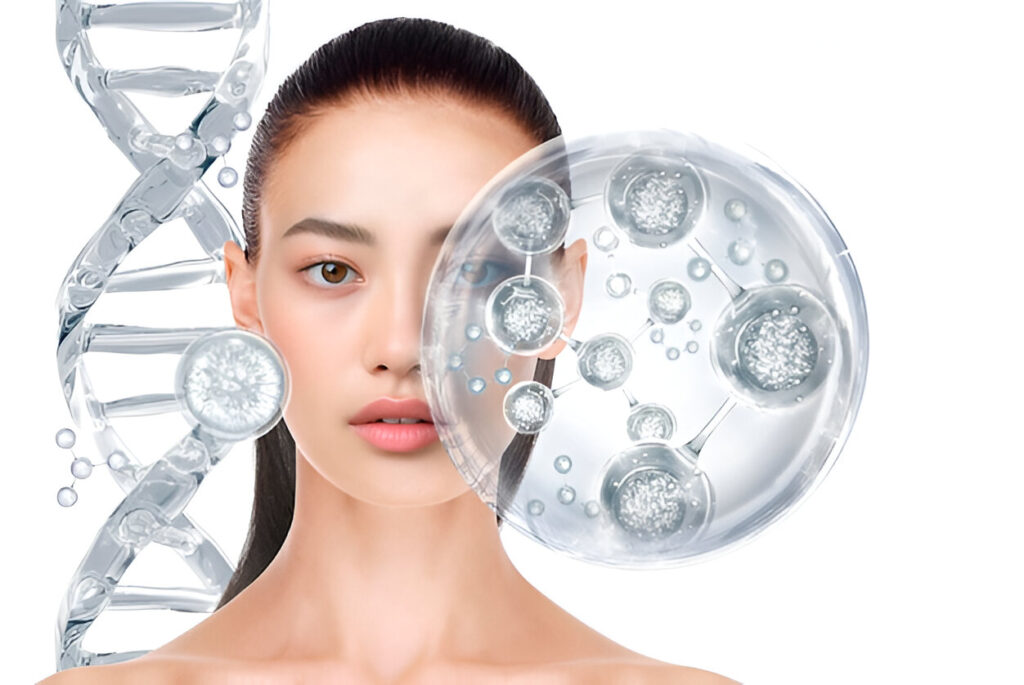
Glutathione is often referred to as the “master antioxidant” for its powerful ability to protect cells from oxidative stress, detoxify the body, and support immune function. In the world of skincare and wellness, glutathione is gaining immense popularity for its skin-brightening effects and overall health benefits. But how effective is it really? Is it safe to take every day? And how do you know if it’s working?
In this blog, guided by EEAT (Experience, Expertise, Authority, and Trust), we break down the science-backed benefits of glutathione, answer commonly asked questions, and help you decide whether it’s the right supplement for your health or skin goals.
What Are the Benefits of Taking Glutathione?
Glutathione is a naturally occurring antioxidant produced by the liver and found in every cell in the human body. Supplementing glutathione—either orally, intravenously, or via topical or sublingual forms—can offer a wide range of benefits:
- Skin Brightening & Pigmentation Control: Glutathione inhibits melanin production, helping to even out skin tone and reduce hyperpigmentation, sun spots, and melasma.
- Anti-Aging Effects: It fights free radicals and slows down the signs of aging like wrinkles, fine lines, and dullness.
- Detoxification Support: Glutathione plays a key role in detoxifying the liver by neutralizing toxins and heavy metals.
- Immune System Boost: It strengthens the immune system by supporting white blood cell function and fighting off infections.
- Improved Energy & Mental Clarity: By reducing oxidative stress, glutathione enhances mitochondrial function, leading to better energy and focus.
At Dr. Hanan Dermatology Speciality and Trichology Clinic in Chennai, we’ve seen patients benefit from customized glutathione protocols—especially those dealing with pigmentation, dull skin, and fatigue.
What Happens If I Take Glutathione Every Day?
Taking glutathione daily can support ongoing detoxification and antioxidant protection. Most oral or IV glutathione protocols are safe when used in recommended doses under the guidance of a medical professional. Here’s what regular supplementation may lead to:
- Gradual Skin Brightening: Many people report visible improvement in skin tone and texture within 4 to 8 weeks.
- Better Liver Health: Continuous detoxification support can ease the burden on the liver.
- Fewer Breakouts or Inflammation: Those with acne-prone skin may see reduced breakouts due to improved immunity and detox pathways.
- Sustained Energy Levels: Daily use helps reduce oxidative damage and supports metabolism, leading to reduced fatigue.
However, high doses or unregulated use of glutathione supplements may affect natural production or interact with certain medications. This is why it’s essential to consult a qualified dermatologist or physician.
How to Know If Glutathione Is Working?
Results from glutathione depend on the individual’s skin type, dosage, form (IV, oral, or topical), and lifestyle. Most patients begin noticing subtle but consistent improvements within 3 to 6 weeks. Signs that it’s working include:
- Improved Skin Glow & Even Tone: A fresher, radiant look is usually the first visible result.
- Reduced Pigmentation Marks: Over time, dark spots, scars, or melasma fade.
- Higher Energy Levels: Less fatigue, better sleep, and mental alertness.
- Fewer Skin Reactions: Those with eczema, acne, or sensitivity often see reduced flare-ups.
To ensure that glutathione is working effectively, you must maintain proper hydration, follow a healthy diet, and avoid habits like smoking and alcohol that counteract its benefits. Follow-up skin assessments and blood work can also track internal progress.
Does Glutathione Help Clear Skin?
Yes, glutathione plays an important role in achieving clearer, brighter skin. Its antioxidant properties reduce oxidative stress that leads to acne and inflammation. Additionally, by lowering melanin production, it supports a more even, spotless complexion.
At our clinic, we often recommend glutathione as part of a combination treatment plan that may include vitamin C, niacinamide, and sunscreen. This synergy enhances its absorption and boosts its skin-clearing potential.
It’s important to set realistic expectations. Glutathione works gradually, and results may vary. It’s more effective when combined with clinical treatments like chemical peels, laser therapy, and dermatologist-prescribed skincare routines.
Final Thoughts: Should You Take Glutathione?
If you’re looking to improve your skin tone, energy levels, or detoxification, glutathione may be worth considering. When used under medical guidance, it’s a powerful supplement with wide-ranging health and cosmetic benefits.
At Dr. Hanan Dermatology Speciality and Trichology Clinic in Chennai, we tailor every skin-brightening plan based on individual goals, lifestyle, and clinical history. If you’re curious whether glutathione is right for you, our dermatologists are here to help.
Book Your Consultation Today!
Table of Contents
Skincare Myths You Want to Know
Skincare Myths You Should Know
Learn the truth behind common skincare myths with expert tips for healthy, glowing skin from dermatologists.
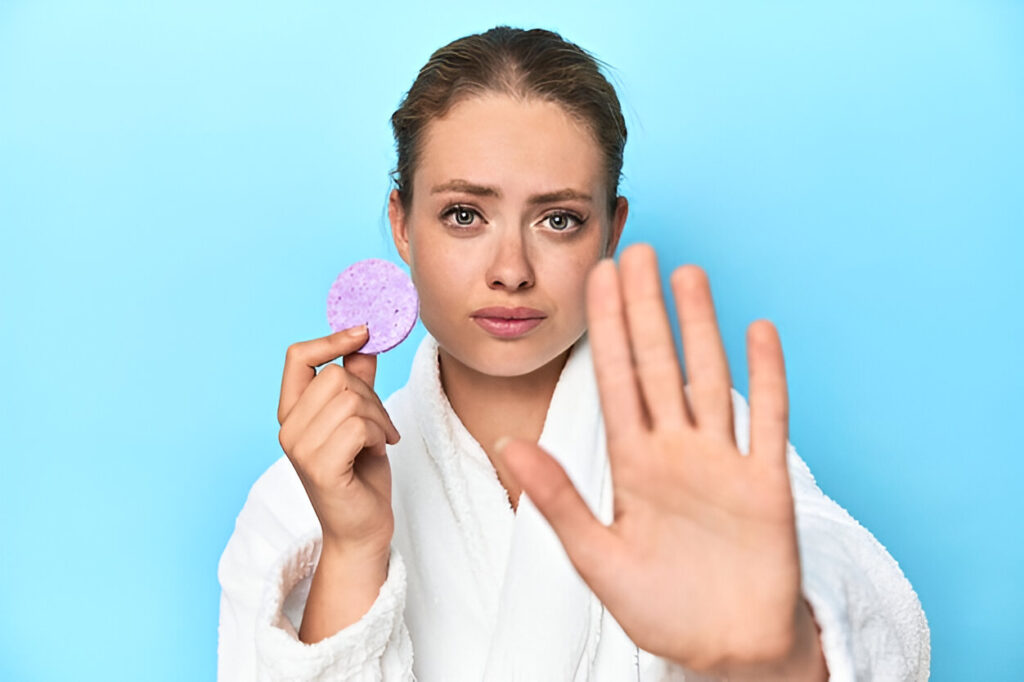
When it comes to skincare, misinformation is everywhere. From social media trends to age-old advice passed down through generations, it’s easy to fall for skincare tips that sound helpful but can actually do more harm than good. As dermatologists at Dr. Hanan Dermatology Speciality and Trichology Clinic, we frequently correct these misconceptions during our consultations.
In this blog, we’ll expose the most common skincare myths you’ve likely heard—and explain the real science behind them.
Myth 1: Oily Skin Doesn’t Need Moisturizer
Many believe that moisturizing oily skin will make it oil. Truth? Lagging moisturizer can actually increase oil production as skin tries to compensate for a lack of hydration. The key is to use a mild, non-comedogenic moisturizer that hydrates without pores. Moisturizers help maintain the natural obstruction of the skin, reduce inflammation and protect against environmental damage. Even oily skin requires balance – and it comes from proper hydration.
Myth 2: You Don’t Need Sunscreen Indoors or on Cloudy Days
UV rays can penetrate clouds and glass, which means that you are exposed even on overcast days or when sitting near window. Daily use of a broad-spectrum sunscreen with SPF 30 or higher is required-induce or out. Regular use of sunscreen helps premature aging, pigmentation and even skin cancer. This should be the final stage in your morning routine – even if you are staying at home or it is raining outside.
Myth 3: Natural or DIY Products Are Always Better
It’s natural that doesn’t mean it’s safe. Lemon juice, toothpaste, or baking soda can be natural, but can damage the skin obstruction, cause irritation, or spoil pigmentation. Many DIY remedies are highly acidic or abrasive, which disrupt the pH of your skin. Professional skincare products undergo clinical testing to ensure safety and effectiveness, while DIY treatments often lack any scientific support. Always consult a dermatologist before trying home remedies.
Myth 4: Scrubbing Removes Pimples and Blackheads
Over-scrubbing can irritate your skin and worsen breakouts. While exfoliation helps remove dead skin cells, harsh physical scrubs can cause microtears. These tears can lead to inflammation, bacterial entry, and worsening acne. Instead, use gentle exfoliants like AHAs or BHAs 1–2 times a week, which penetrate pores and clean them from within without damaging the skin’s surface.
Myth 5: Acne Is Only for Teenagers
Acne can affect people at any age – especially due to hormonal changes, stress or skincare products. Adult acne is very common, especially in women during its 20, 30s and even 40s. Factors such as PCOS, pregnancy and work tension can trigger breakouts. Adult acne is also more inflammatory and resistant to treatment, which is why professional guidance is necessary.
Myth 6: The More Expensive the Product, the Better
The price doesn’t always reflect effectiveness. Many affordable skincare brands have clinically proven ingredients such as niacinamide, salicylic acid and retinol that provide results. Some expensive products may have fragrance or filler materials that provide very little benefits. What exactly means to understand your skin’s needs and choose products with scientifically supported active ingredients
Myth 7: Drinking More Water Alone Will Hydrate Your Skin
While staying hydrated is important for overall health, drinking water alone won’t fix dry skin. Topical moisturizers with ingredients like glycerin, ceramides, or hyaluronic acid are required to trap moisture in the skin barrier. Skin hydration is a combination of internal and external care—what you drink helps, but it won’t replace what you apply topically.
Myth 8: You Should See Immediate Results from Skincare
Skincare is a process, not magic. Most active ingredients take 4–8 weeks or more to show visible changes. Expecting overnight results can lead to product-hopping or overuse, which harms the skin. Consistency, patience, and the right ingredients for your skin type are the foundation of effective skincare.
Myth 9: You Don’t Need to Wash Your Face in the Morning
Even overnight, your skin accumulates oil, sweat, and bacteria. Gently cleansing your face in the morning helps start your skincare routine with a clean base and improves the effectiveness of your morning products. It also preps your skin to better absorb ingredients from serums and moisturizers applied afterward.
Myth 10: Makeup Causes Acne
Makeup itself doesn’t necessarily cause acne—improper removal or using comedogenic products can. Look for labels like “non-comedogenic,” “oil-free,” or “dermatologist-tested.” Always cleanse your face thoroughly at night, and avoid sleeping with makeup on. Regularly cleaning your brushes and sponges also reduces the chance of bacterial transfer.
Final Thoughts: Trust the Experts
Your skin is unique. What works for one person may not work for another. Instead of relying on viral trends or outdated advice, speak to a qualified dermatologist. At Dr. Hanan Dermatology Speciality and Trichology Clinic in Chennai, we provide evidence-based treatments and personalized skincare plans for your needs.
Break free from skincare myths—and give your skin the care it actually needs.
Book Your Consultation Today!
Table of Contents
Monsoon Skincare Tips: Keep Your Skin Fresh, Clear, and Glowing
Monsoon Skincare Tips: Keep Your Skin Fresh, Clear, and Glowing
Protect your skin this rainy season with dermatologist-approved monsoon skincare tips. Learn how to prevent breakouts, dryness & infections.
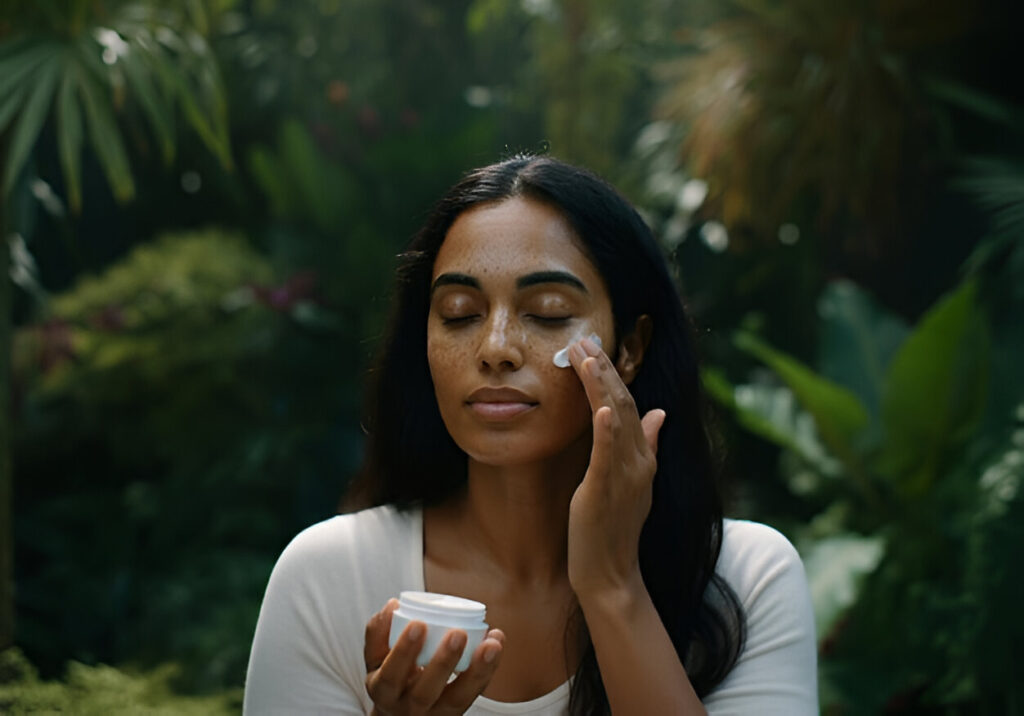
The monsoon season brings welcome relief from scorching heat – but a new set of skin concerns with cool showers. A range of skin issues such as increased humidity, ups and downs, and a series of skin issues such as breakouts, fungal infections, excessive oils, or unexpected dryness in a moist environment can be triggered. It is necessary to update your skincare routine during this season. In this blog, we will explore monsoon skincare tips approved by a dermatologist to keep your skin healthy, glow and balanced in all seasons.
Why Does Skin Need Special Care During Monsoons?
During the monsoon, the skin is exposed to a humid environment that can disrupt its natural barrier. Excess moisture in the air increases oil secretion in some skin types and increases the clog pores, causing acne or fungal infections. For others, sudden temperature shifts and indoor air conditioning can remove moisture, causing dry, flaky skin. The skin also attracts more dirt, sweat and pollutants during this season.
To maintain the glow and health of your skin, it is important to follow a skincare routine customized to monsoon-specific challenges.
Use a Gentle, pH-Balanced Cleanser
Humidity and pollution can prevent your pores during the monsoon season. Switch to a gentle, pH-balanced cleanser that removes sweat, dirt and excess oil without snatching the required moisture skin. For oily or acne-prone skin, gel-based cleanser work well with salicylic acid or tea tree oil. If your skin is towards drying, choose a mild foaming or creamy cleanser.
Tone to Control Pores and Prevent Acne
Toner is your best friend during monsoon, especially if you have oily or combination skin. Use alcohol-free toner with natural astringents such as witch hazel, rose water, or green tea. Toning helps in reducing increased pores, controlling sebum production and preventing bacteria growth.
Don’t Skip Moisturizer
Just because it is not humid, it means that you can leave moisturizing. The skin still needs hydration to stay balanced. Choose a light, non-comedogenic moisturizer that hydrates your skin without being greasy. See for materials such as hyaluronic acid, aloe vera, or glycerin.
Always Apply Sunscreen
Even if it is cloudy outside, UV rays can enter and damage your skin. Use a broad spectrum sunscreen with at least SPF 30 daily. Opt to water-resistant, gel-based, or matte-finish sunscreen to avoid that sticky spirit.
Is Laser Scar Treatment Painful?
One of the most common concerns is whether laser treatment for scars is painful. While some discomfort can be experienced – often described as a flash sensation – it is generally well tolerated. Topical numbing creams are applied before the process.
Exfoliate Once or Twice a Week
Dead skin cells and additional sebum can be build-up rapidly during the monsoon. Gentle exfoliation helps unclog the pores once or twice a week and improves the texture of the skin. Use light scrub or chemical exfoliants such as lactic acid or fruit enzyme-based peel. Avoid over-examination as it can disturb the skin.
Stay Hydrated and Eat Right
Healthy skin starts from within. Drink plenty of water throughout the day to maintain hydration. Include antioxidant -rich foods such as fruits, leafy greens, nuts and seeds. Avoid fried, sugar foods that can spoil acne or cause inflammation.
Keep Your Makeup Minimal and Clean
If you wear makeup during the monsoon, go for light, breathable formulas such as BB Creams or Matte Foundation. Avoid heavy, oil-based products that can melt and close the pores. Always remove makeup completely before bedtime and clean your brush and sponge regularly to avoid bacterial buildup.
Watch for Fungal Infections
High humidity can trigger fungal infections, especially around the neck, back, underarms, and feet. Keep these areas dry and clean. Use antifungal powders if you’re prone to infections, and avoid sharing towels or razors.
Change Towels and Pillowcases Regularly
Your skin comes in contact with these items daily. During monsoon season, change them more frequently to avoid the accumulation of bacteria, oil, and sweat that could lead to breakouts or rashes.
Consult a Dermatologist for Persistent Issues
If you notice recurring acne, eczema, or fungal infections during the monsoon season, it’s best to consult a dermatologist. At Dr. Hanan Dermatology Speciality and Trichology Clinic in Chennai, we provide personalized skincare guidance and treatments tailored for seasonal skin concerns.
Final Thoughts
Monsoon skin care is all about balancing oil, moisture, and cleanliness. With the right daily routine and a few simple lifestyle habits, you can keep your skin clear, fresh, and glowing even in the most unpredictable weather. The key is consistency and listening to your skin’s changing needs.
Stay radiant this monsoon-rain or shine!


